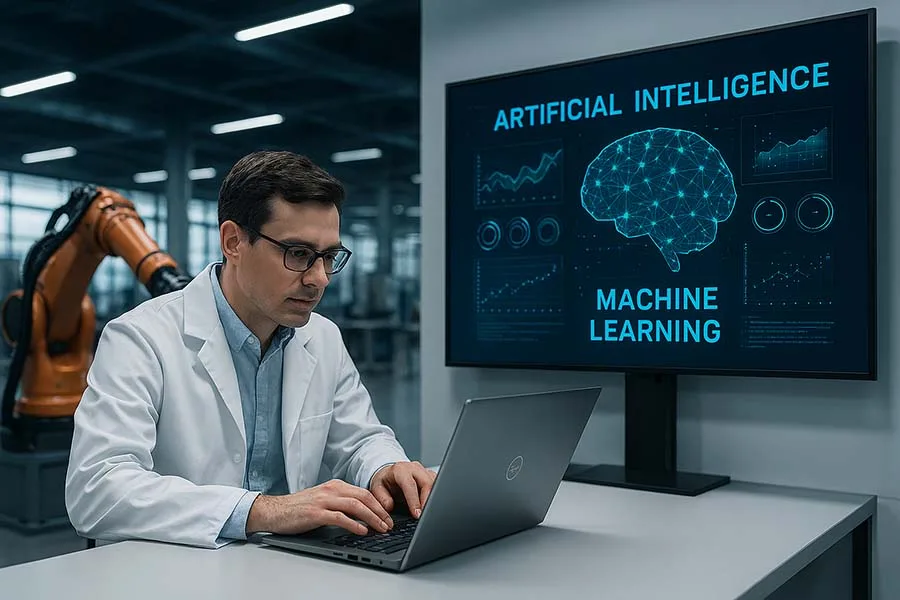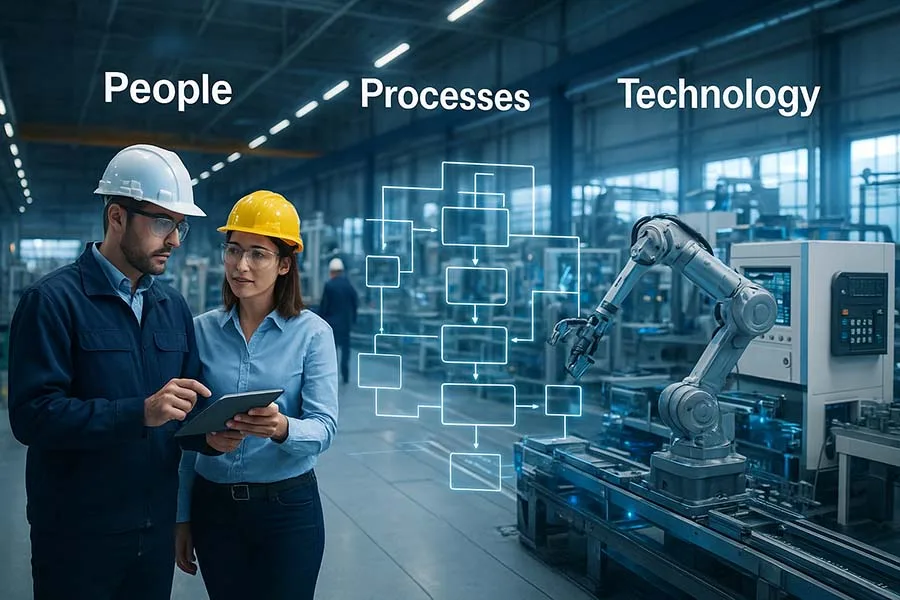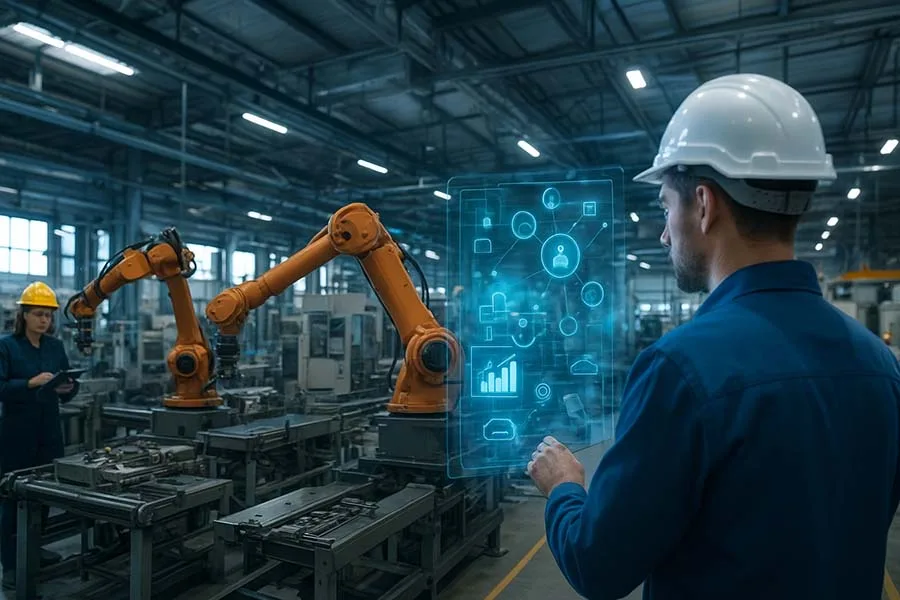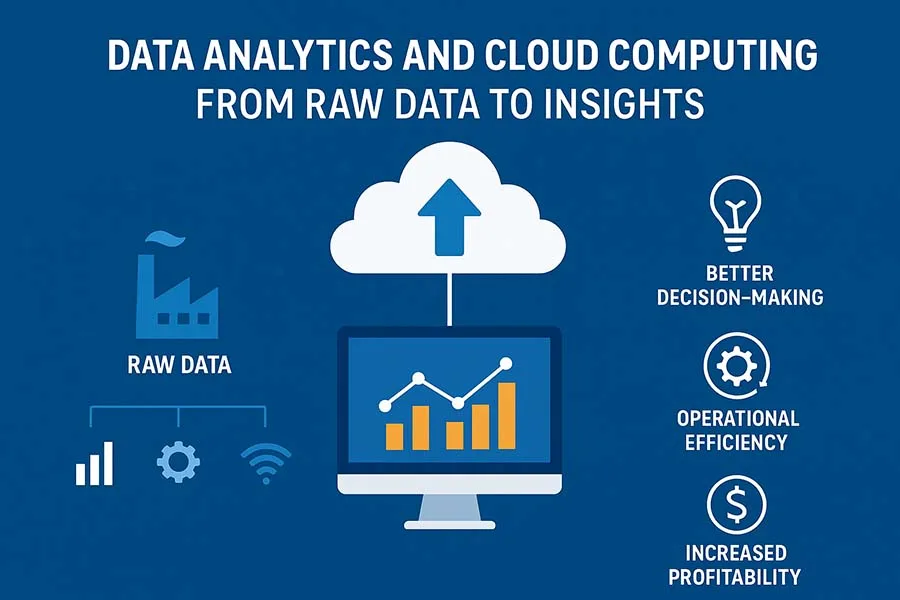Introduction: The Rise of Smart Manufacturing
Modern manufacturing is evolving beyond traditional assembly lines. Artificial intelligence (AI) and machine learning (ML) are driving the transformation of factories into smart, data-driven environments. By analyzing vast amounts of data, predicting equipment failures, and optimizing processes in real time, AI and ML empower manufacturers to improve efficiency, quality, and flexibility.
In this article, we’ll explore what AI and machine learning are, how they enhance manufacturing, real-world applications, challenges, and emerging trends shaping the future of production.
What Are AI and Machine Learning?
Artificial intelligence (AI) is the simulation of human intelligence in machines that can perform tasks such as decision-making, pattern recognition, and problem-solving. Machine learning (ML) is a subset of AI, where machines learn from data to improve their performance without explicit programming.
Key aspects in manufacturing:
- Predictive analytics: Forecasting equipment failures or production bottlenecks.
- Optimization: Automating process adjustments for maximum efficiency.
- Quality control: Detecting defects and anomalies in real time.
- Decision support: Providing actionable insights from large data sets.
Why AI and ML Matter in Manufacturing
- Enhanced productivity: AI algorithms optimize scheduling, reduce downtime, and streamline workflows.
- Predictive maintenance: Machine learning models predict failures before they happen, saving costs.
- Improved quality: Real-time defect detection ensures consistent product standards.
- Cost reduction: Automation of data analysis and optimization minimizes waste and energy usage.
- Flexibility: Factories can quickly adapt production processes for new products or custom orders.
Lesser-known fact: Some AI systems can predict production anomalies hours before they occur by analyzing subtle patterns invisible to humans.
Core AI and ML Technologies in Manufacturing
- Predictive Maintenance Systems: Use historical sensor data to forecast equipment failures.
- Computer Vision: Detect defects, monitor assembly lines, and improve quality control.
- Natural Language Processing (NLP): Analyze maintenance logs and operator reports for insights.
- Robotic Process Automation (RPA): Automate repetitive administrative or operational tasks.
- Reinforcement Learning: AI learns optimal production strategies through trial and error in virtual simulations.
- Digital Twins Integration: AI-driven digital twins simulate and optimize operations in real time.
Real-World Applications
1. Manufacturing Operations
- Process optimization: AI monitors machine performance, adjusting parameters to maximize output.
- Example: Bosch uses AI to optimize production lines, reducing energy consumption and production time.
2. Predictive Maintenance
- Equipment failure prevention: AI predicts failures and schedules maintenance proactively.
- Example: Siemens uses ML algorithms to forecast issues in gas turbines, preventing costly downtime.
3. Quality Control
- Defect detection: Computer vision identifies anomalies on assembly lines faster than human inspectors.
- Example: Tesla uses AI-driven cameras to detect paint or assembly defects automatically.
4. Supply Chain & Inventory Management
- Demand forecasting: AI predicts material requirements and manages inventory efficiently.
- Example: General Electric leverages AI to optimize supply chains for complex industrial parts.
5. Human-Robot Collaboration
- Smart assistance: AI enhances cobot performance, enabling safer and more efficient interactions with humans.
- Example: Fanuc’s AI-enabled robots adjust tasks in real time based on human activity patterns.
Challenges and Considerations
While AI and ML bring transformative benefits, manufacturers face challenges:
- Data quality and availability: AI systems rely on accurate, consistent data for reliable predictions.
- High implementation cost: Hardware, software, and training can be expensive.
- Skills gap: Staff require AI, ML, and data analytics expertise.
- Cybersecurity: Connected systems are vulnerable to cyber attacks if not properly secured.
- Integration complexity: AI solutions must integrate seamlessly with legacy systems and production processes.
Future Trends in AI-Powered Manufacturing
- Autonomous factories: AI-driven systems will optimize production, maintenance, and supply chains without human intervention.
- Edge AI: Real-time data processing on the factory floor for faster decisions.
- AI-driven design: Machine learning algorithms assist in product innovation and customizations.
- Sustainability optimization: AI minimizes energy usage, waste, and environmental impact.
- Digital twins & AI synergy: AI-enhanced digital twins simulate and optimize operations with unprecedented precision.
Fun fact: Some factories now use AI to analyze workers’ movement patterns to improve ergonomics and reduce fatigue—making AI a workplace wellness tool too!
Artificial Intelligence (AI) and Machine Learning FAQ
Further Read
- Core Foundations of Industry 4.0: The Tech Stack Explained
- Industrial Internet of Things (IIoT): Connecting Machines, Data, and People
- Digital Twin Technology: From Concept to Real-World Applications
- Robotics and Automation: The Heart of Smart Manufacturing
- Artificial Intelligence (AI) and Machine Learning: Smarter Manufacturing
- Augmented Reality (AR) and Virtual Reality (VR): The Human-Tech Interface
- Data Analytics and Cloud Computing in Industry 4.0
- Cybersecurity in Industry 4.0: Protecting the Smart Factory
- Integration and Interoperability in Industry 4.0
- Benefits of Understanding the Core Foundations: People, Processes, and Technology
- Challenges and Barriers in Industry 4.0: Overcoming the Roadblocks to Smart Manufacturing
- The Future of Manufacturing: Towards Industry 5.0
Conclusion
AI and machine learning are redefining manufacturing by making factories smarter, more predictive, and highly efficient. From predictive maintenance to supply chain optimization, these technologies provide manufacturers with a competitive edge. As AI evolves, it will continue to unlock new opportunities in smart manufacturing, creating safer, faster, and more flexible production environments.
How is AI transforming your manufacturing processes? Share your experiences or questions in the comments below!





